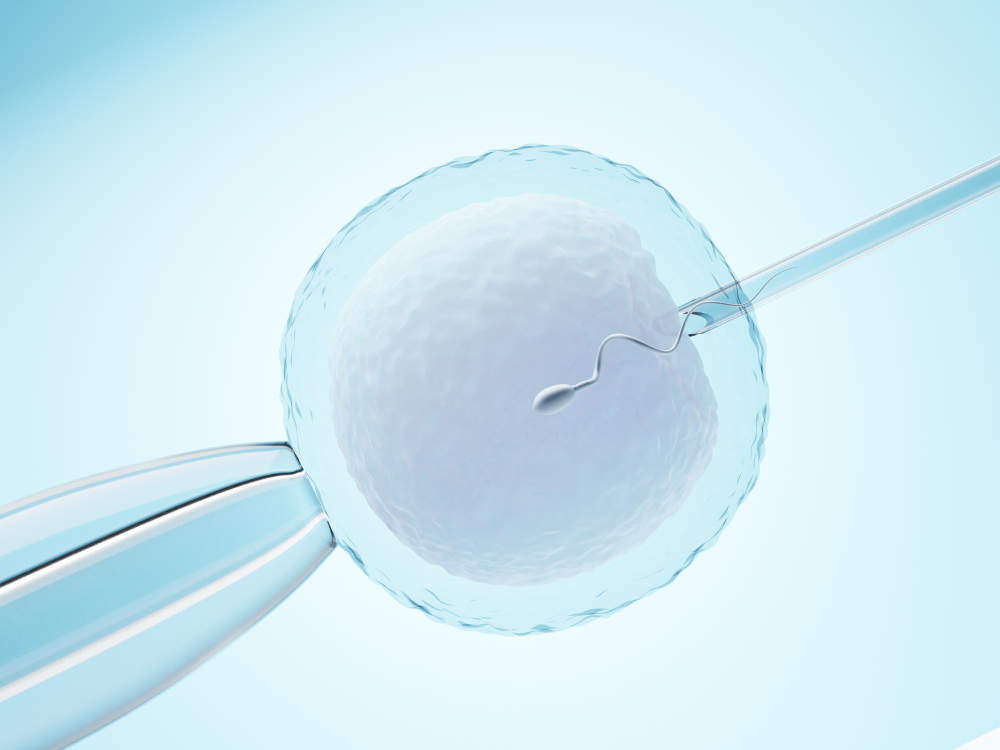BLOG
What is In Vitro Fertilization (IVF) and When Is It Recommended?
In vitro fertilization, commonly known as IVF, is one of the most advanced and effective treatments in reproductive medicine. Its development has enabled thousands of people around the world to become parents, even in situations that were once considered hopeless.
Understanding what IVF involves and when it is recommended can help you make informed decisions if you’re facing challenges in achieving pregnancy.

How Does IVF Work?
IVF is a procedure in which fertilization does not occur inside the body but in a specialized laboratory. Mature eggs are retrieved directly from a woman’s ovaries and fertilized with sperm under controlled conditions. Once the embryo is formed, it is transferred to the uterus with the goal of achieving a successful implantation.
What Genetic Materials Can Be Used?
This treatment can be carried out using the eggs and sperm of the couple, but it may also involve donors. This is especially useful in cases of ovarian failure, severely impaired sperm quality, absence of a partner, or shared motherhood projects between women.
When Is IVF Recommended?
IVF is often recommended in a variety of clinical scenarios. One of the most common is when a woman has undergone tubal ligation or has bilateral tubal obstruction. In these situations, the fallopian tubes prevent the natural meeting of the egg and sperm, so fertilization must occur outside the body. It is also recommended in cases of moderate to severe endometriosis, particularly when the ovaries are affected or pelvic adhesions interfere with fertilization or implantation.
CONTACT
Do you have questions about your fertility?
Schedule your appointment with our specialists and find out if you’re a candidate for one of our treatments.

IVF in Women of Advanced Maternal Age
Another important group of patients includes women facing infertility related to advanced maternal age. In these cases, ovarian reserve is often diminished, requiring a strategy that provides greater control over timing and embryo quality.
IVF for Severe Male Factor Infertility
IVF is also widely used in cases of severe male infertility—when sperm count is very low, motility is poor, or morphology is significantly abnormal. In such cases, IVF can be combined with ICSI (intracytoplasmic sperm injection), a complementary technique that enhances the chances of fertilization.
IVF as a Genetic Strategy
There are also situations where IVF is recommended for genetic reasons. If either partner is a carrier of a hereditary condition or there is a history of recurrent pregnancy loss, preimplantation genetic testing (PGT-A or PGT-M) can be performed to select healthy embryos before transfer. This provides added safety and reduces the risk of passing genetic disorders to offspring.
When to Move to IVF After Other Treatments
IVF becomes the best option when simpler treatments, such as ovulation induction with timed intercourse or intrauterine insemination, have failed after several attempts. Advancing to IVF in these cases optimizes the process and increases the likelihood of pregnancy per cycle.
How Long Does an IVF Cycle Take?
A typical IVF treatment cycle lasts about two to three weeks. It involves ovarian stimulation with medication, monitoring via ultrasounds and hormone testing, egg retrieval under sedation, laboratory fertilization, embryo culture, and finally, embryo transfer to the uterus. If there are additional embryos, they can be vitrified for future use.
At Baja Fertility Services, we offer a comprehensive and personalized approach. We assess all medical, hormonal, anatomical, and emotional factors before recommending any treatment, including IVF. Our goal is to provide real, safe options backed by science—always prioritizing your well-being.
A Powerful Tool to Achieve Your Dream
REFERENCES
- American Society for Reproductive Medicine (ASRM). Assisted reproductive technologies: a committee opinion. Fertil Steril. 2021;115(4):858–873.
- European Society of Human Reproduction and Embryology (ESHRE). Guideline: Medically assisted reproduction. 2023.
- Asociación Mexicana de Medicina de la Reproducción (AMMR). Recomendaciones para el manejo de la infertilidad femenina y masculina. Guía Nacional 2022.
- American College of Obstetricians and Gynecologists (ACOG). Practice Bulletin No. 218: Fertility treatment. Obstet Gynecol. 2021;137(4):e75–e91.
CONTACT
BOOK YOUR APPOINTMENT
We are here to support you on your journey to parenthood. Booking an appointment with us is the first step toward receiving the care and support you need.
GET IN TOUCH
If you have any questions or need more information before scheduling your appointment, feel free to contact us. We are here to help.
LOCAL PHONE
664 635-8427
PHONE FROM THE U.S:
001 619 4003830
+52 664 166 9569
info@bajafertility.com
ADDRESS
Torre Norte 2: Fray Servando Teresa de Mier 1351, local 601, Zona Urbana Río Tijuana, Tijuana, B.C.
BLOG
Browse Our Articles

Options for same-sex couples who wish to start a family
There are safe and personalized treatments available for same-sex couples to build a family.

What is the ROPA method and how does it allow two women to share motherhood?
The ROPA method (Reception of Oocytes from the Partner) allows two women to biologically share motherhood.

What is hysteroscopy and when is it needed?
Hysteroscopy diagnoses and treats uterine conditions in a precise, outpatient procedure.

Can I get pregnant if I had my tubes tied? Real and effective alternatives
Can I get pregnant if I had my tubes tied? Real and effective alternatives

